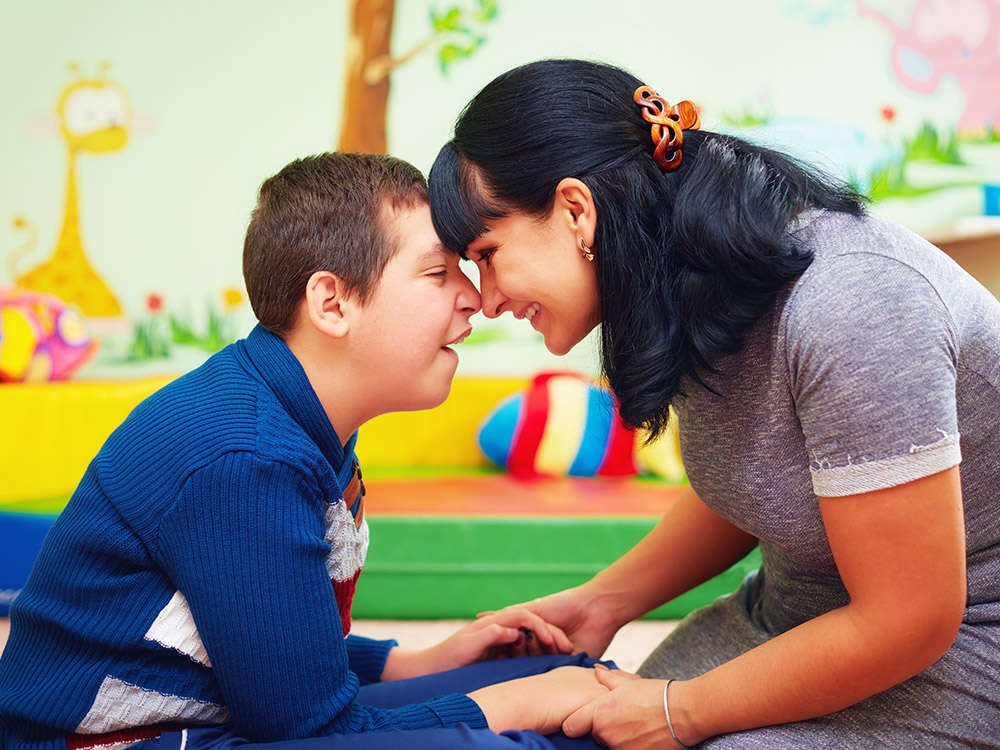Recognizing the Spectrum: A Comprehensive Guide to Autism Recognition
Wiki Article
Discovering Autism: Strategies for Effective Communication and Interaction
Efficient interaction and interaction with people on the autism spectrum demand a detailed understanding of their distinct demands and preferences. The details of these approaches disclose additional factors to consider that merit expedition, particularly in just how they can be adapted to private experiences and diverse contexts.Recognizing Autism Range Disorder
Autism Spectrum Problem (ASD) encompasses a series of neurodevelopmental conditions defined by obstacles in social interaction, interaction, and recurring habits. The term "range" reflects the diverse symptoms and differing degrees of intensity experienced by people with ASD. While some may display substantial impairments, others may show high-functioning attributes, permitting higher freedom in daily life.The beginning of ASD normally occurs in early youth, with indications usually recognizable by age two. Early indications might consist of delayed speech development, limited eye get in touch with, and problems in recognizing social signs. The accurate etiology of ASD stays uncertain, research study suggests a combination of genetic and environmental factors plays an essential function in its development.
As an outcome, interventions and assistance tailored to individual demands are crucial for promoting communication and social abilities. Acknowledging the complexity of ASD is crucial for promoting recognition, approval, and efficient strategies that promote significant interactions with people on the spectrum.

Value of Clear Interaction
Efficient communication is vital for cultivating understanding and link, especially for individuals with Autism Range Condition (ASD) Clear communication not only facilitates social communications however also enhances the person's capability to express their emotions, thoughts, and requirements. For individuals with ASD, the subtleties of language can typically be challenging; consequently, utilizing unambiguous and uncomplicated language is vital.Furthermore, clear interaction helps lower irritation and anxiety that might occur from misconceptions. When messages are conveyed in a straight and consistent way, individuals with ASD are better equipped to translate details precisely, which can significantly improve their social engagement and involvement in numerous settings.
Developing regimens and using aesthetic assistances can even more strengthen clear communication. These techniques give individuals with predictable structures that aid comprehension and retention of info. In addition, actively being and paying attention person during interactions promotes a supportive setting where people with ASD feel valued and comprehended.
Ultimately, focusing on clear communication not only equips people with ASD yet also promotes more significant links with their peers, caretakers, and the wider community, leading the way for comprehensive communications and joint relationships. - autism
Non-Verbal Communication Methods
Communication prolongs beyond words, and for individuals with Autism Spectrum Condition (ASD), non-verbal hints play a considerable function in communications. Non-verbal interaction methods can consist of facial expressions, gestures, body language, and eye get in touch with, all of which work as important components for conveying emotions and intentions.Understanding and interpreting these non-verbal signals can boost communications with people with ASD. A cozy smile or open position can produce a welcoming ambience, urging interaction. Likewise, using aesthetic help-- such as photo cards or symbols-- can link interaction spaces and help share messages a lot more successfully.
It is likewise essential to be conscious of individual space, as people with ASD may have different convenience levels pertaining to distance. Observing their reactions to physical nearness can inform ideal modifications.

Producing Helpful Environments
Developing a helpful environment is crucial for cultivating favorable interactions and boosting the wellness of people with Autism Range Disorder (ASD) Such settings can substantially decrease anxiousness and produce a sense of security, allowing people to express themselves extra easily.To achieve this, it is necessary to think about sensory level of sensitivities that individuals with ASD might experience. Customizing the physical room to include soft lights, minimal history noise, and comfortable seats can create a relaxing atmosphere. In addition, using constant regimens and clear visual routines can help individuals prepare for transitions and minimize unpredictability, further advertising convenience.
Social spaces must be structured to minimize overwhelming stimulations while providing chances for involvement in preferred activities. Promoting areas assigned for peaceful time can additionally work as a sanctuary throughout minutes of stress. Significantly, including components of choice empowers individuals, enabling them to work out firm in their environment.

Urging Social Interactions
Cultivating social interactions amongst individuals with Autism Range Disorder (ASD) needs intentional methods that prioritize comfort and involvement. Establishing foreseeable regimens can assist lower anxiety, making social setups more approachable. Developing structured atmospheres with specified duties and roles enables people to engage without the overwhelming stress of disorganized social dynamics.Integrating passions and toughness additional resources into social activities can act as a stimulant for interaction. For instance, arranging team tasks around shared hobbies or subjects of fascination can assist in all-natural conversations and connections. In addition, utilizing visual supports, such as photographic routines or social manuscripts, can assist in recognizing social signs and assumptions.
Designing appropriate social behaviors is important - autism. Grownups and peers must show efficient interaction methods, consisting of active listening and turn-taking. Role-playing situations can likewise supply a risk-free area for individuals to practice these skills
Lastly, fostering peer relationships via comprehensive techniques is crucial. Urging comprehensive playdates or pop over to this site group outings can create opportunities for socializing in a comfy setup. By carrying out these caregivers, techniques and educators can substantially improve social interactions for people with ASD, promoting their overall social growth and wellness.
Verdict
In final thought, reliable interaction and interaction techniques are necessary for sustaining people with Autism Spectrum Disorder. Eventually, these methods encourage people with autism to navigate social landscapes, promoting their overall wellness and allowing the advancement of long-term partnerships.Effective communication and interaction with individuals on the autism spectrum necessitate an extensive understanding of their distinct requirements and preferences. Clear communication not only assists in social interactions but also improves the person's ability to share their thoughts, needs, and emotions.Cultivating official source social communications amongst individuals with Autism Spectrum Disorder (ASD) requires willful approaches that focus on convenience and interaction. By executing these techniques, caregivers and educators can considerably boost social communications for individuals with ASD, advertising their general social development and health.
In final thought, effective interaction and interaction strategies are essential for sustaining individuals with Autism Range Disorder.
Report this wiki page